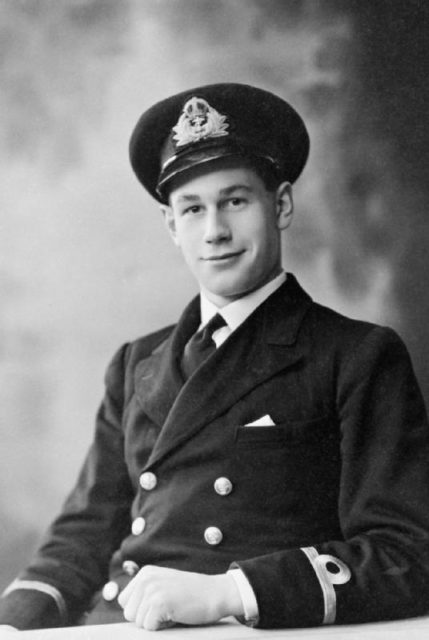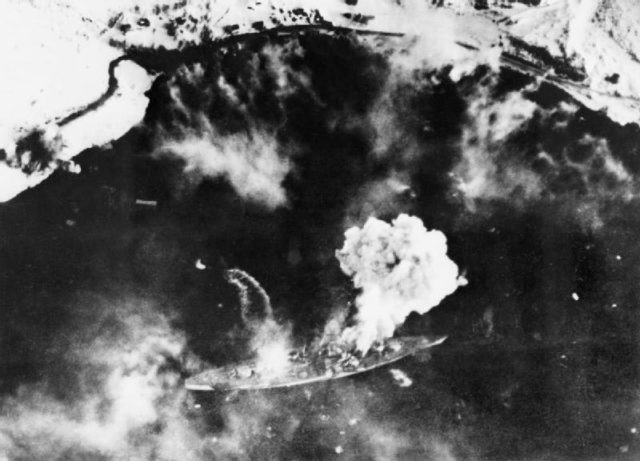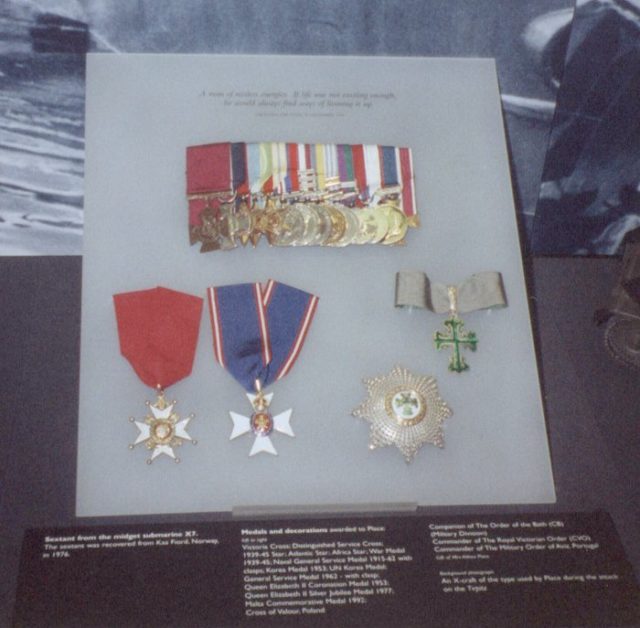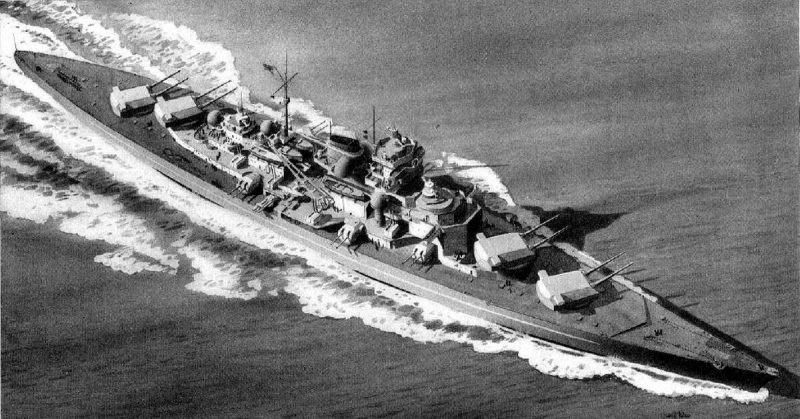A daring submarine exploit of the Second World War was an attempt to sink the battleship Tirpitz using midget submarines. One man who came close to success won both a Victoria Cross and two years as a POW for his trouble. His name was Godfrey Place, and he would go on to become an admiral.
An Eager Young Lieutenant
Basil Charles Godfrey Place, known as Godfrey, was only 14 years old when he joined the Royal Navy in 1935. In 1940, he volunteered to serve in submarines, one of the most unpleasant duties in naval service. Submariners spent a lot of time trapped within the confines of their boats, without daylight or fresh air. If their vessels were hit, fatalities were likely, due to the difficulty of getting out safely and the fact they often sailed alone far from shore.
On becoming a submariner, Godfrey first served as the liaison officer on a Polish submarine. He then joined the crew of the Unbeaten in the Mediterranean, where he earned a Distinguished Service Cross for helping to sink an Italian submarine in March 1942.
In 1943, he took part in a very different operation against the battleship Tirpitz.

The Tirpitz
Commissioned in 1939, the German battleship Tirpitz was one of the two largest battleships built in Europe. Along with her sister ship the Bismarck, she created a deep fear in the British navy. If she got out into the ocean, she could wreak havoc among the supply convoys. From the start, the British put an enormous effort into containing the Tirpitz. For several years, she spent most of her time lurking in the fjords of Norway, waiting for a safe chance to get out to sea.
X-class Midget Submarines
The Royal Navy and the Royal Air Force (RAF) launched more than a dozen operations to try to sink the Tirpitz. The first of these, Operation Source, was carried out by X-class submarines.
These midget submarines were 50 feet long and five feet in diameter. Their engines were originally designed for buses. Even compared with conventional submarines they were cramped, noisy, and involved in dangerous work; planting timed explosives under enemy ships.
Godfrey volunteered for this challenging work.
Training
All the crew on the X-craft submarines were volunteers. They spent the summer of 1943 in Scotland, practicing their roles. The work required great nerve and skill. They would need to pilot their tiny craft to Norway, stealthily approach the enemy in confined waters, plant their bombs, and get away.
Meanwhile, the Tirpitz had been spotted in Altafjord on the north coast of Norway.

A Hazardous Crossing
The X-craft were towed to Norway by larger submarines. It was a 1000-mile journey for which the small craft were not suited. Two broke loose on the way. One was recovered, but the other was lost with all hands. There were casualties before the attack even began.
Creeping Up the Fjord
Near Altafjord, a mine became caught on the front of X-7, Godfrey’s craft. Climbing onto the forward casing, he dislodged it with his foot.
Then came the approach to the target. For two days from September 20-22, the X-craft crept 50 miles to the Tirpitz, through listening posts, anti-submarine netting, minefields, gun emplacements, and anti-submarine patrols.
Four X-craft set out on this stage of the journey. Cautiously, slowly, they approached their target.
X-10 had to be abandoned after developing a fault.
X-5 was hit by gunfire 500 yards from the target and sank.
X-6 was spotted by the Germans and with systems malfunctioning, rammed the Tirpitz.
Only X-7 remained to plant their charges.
The Last Survivor
X-7 was caught on the submarine netting. Breaking free, she collided with the Tirpitz before slipping beneath the battleship. She released her two explosive charges under the ship.
Ticking Bombs
The timers on the bombs were ticking, but the X-7 was in trouble. She was caught in netting again. Air supplies were running out. Right beside her, the bombs were about to explode.
Then came a stroke of luck. One of X-6’s bombs went off and blew X-7 clear of the net.
The Fate of the Tirpitz
The submarine bombs buckled the Tirpitz’s drive shafts, shook loose a massive gun turret, and knocked out sensitive communications and sensor equipment. It took until April 1944 to get her running again and even then, she was limited in what she could do.
In November 1944, RAF Lancaster bombers hit her in Tromso Fjord, finally sinking her.

POW
Godfrey surfaced near the Tirpitz to see what had been achieved. He was disappointed to see the ship still afloat. After diving once more, he was forced to resurface due to a lack of air.
Godfrey and five other survivors of the mission became prisoners of war. They had not fulfilled their objective, but they had bought the Allies another seven months without risk of the Tirpitz getting out to sea.
For his brave work, Godfrey was awarded the Victoria Cross in 1944, as was Donald Cameron, the commander of X-6.
A Distinguished Career
Godfrey stayed in the Navy after the war but did not return to work in submarines. Instead, he transferred to the Fleet Air Arm where he trained as a pilot.
During the Korean War, he flew a Sea Fury fighter-bomber, attacking the Chinese both on the ground and in the air. He then returned to the sea, taking command of a series of ships, including destroyers, a frigate, and an aircraft carrier.
In 1968, he became a rear-admiral and took up the position of Admiral Commanding Reserves. He retired two years later and lived until 1994.
He had an incredibly eventful career, but nothing would match those two days in the Norwegian fjord.
Source:
Gordon Brown (2008), Wartime Courage.
